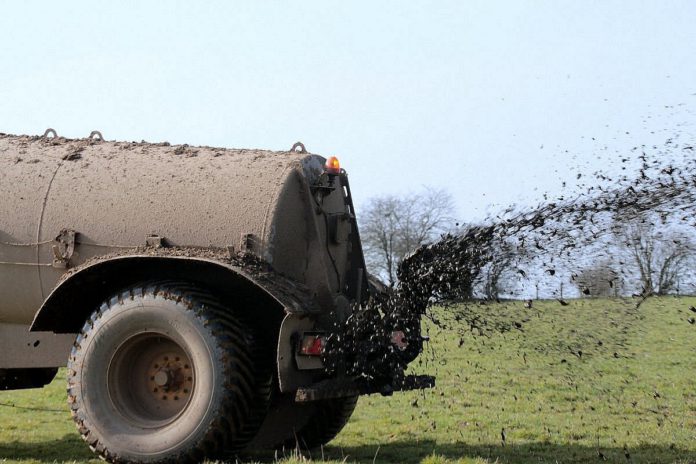The prohibited period when slurry and fertilisers spreading is not allowed to be spread on Galway farms will come to an end after January 15th, writes Ivan Kelly, ASSAP Adviser, Teagasc Galway/Clare.
Slurry and fertiliser are prohibited from being spread over the winter in Ireland to comply with the European Union’s Nitrates Directive.
The aim is to protect ground and surface water, including drinking water. The regulations also prohibit such application at any time of the year when the ground is frozen, waterlogged, or heavy rain is forecast.
Research
Research in the Teagasc Agricultural Catchments Programme show that losses of nutrients to watercourses on a given day during the winter period, is 4 times higher than in summer, even when both days have similar rainfall.
From October onwards, plant growth and hence nutrient uptake from the soil begins to decline. This leads to very low nutrient demand by the crop/grass and a very low recovery of soil nutrients over the winter period.
This declining growth is closely linked with the declining light and temperature impacting plant physiology. Therefore, even if land is trafficable, soils will not turn this growth situation around during this winter period.
There is further evidence, even after the 15th January that slurry and fertiliser spreading can lead to increased nutrient loss during this early spring period if high application rates are applied when soils are wet, and rainfall is high.
It is important to match fertiliser application in early spring with growth rate. In general, heavy or peaty soils will be slower to warm up. Fertiliser and slurry should be delayed until soil temperatures are above 6 degrees and land is trafficable.
The development of Low Emission Slurry Spreading equipment has allowed efficient application of slurry even where there is a good grass cover, therefore, allowing more flexibility on application timing.
Spreading slurry with a trailing shoe, dribble bar or injector system can also reduce the ammonia emissions, increase nitrogen value, and reduce odours.
Once the growing season does arrive, the location of where the nutrients are applied and knowing your soil type is important.
Nitrogen losses
Most Nitrogen losses occur from free draining and light soils as N does not bind tightly to soil. The application of more N than the growing plant can take up leads to loss through leaching downwards through the soil to waters. The EPA has estimated that Irish farmers lose €75 million worth of Nitrogen each year in this manner.
Phosphorous is most prone to loss from low permeability clay soils or soils which are peaty in nature. This loss occurs through overland flow of water which carries sediment and P into drains and surface waters.
To mitigate against the loss of P to waters, we can “Break the Pathway” through the use of buffer strips. Buffer strips are no spread zones for nutrients.
A buffer strip may be fenced or unfenced, planted with trees or just grass. However, in all cases acts to intercept and take up excess nutrients before they negatively impact on water.
Ditches and drains are designed to remove water from fields but act as corridors and connecting pathways for nutrients. Buffer strips should be sited along these areas of potential loss.
The following buffer strips must be maintained:
You must not spread:
Chemical fertiliser on land within 2m of surface waters
- You must not spread organic manure within:
- 5m of surface waters (extends to 10m for first 2 and last 2 weeks of the spreading season)
- 10m of surface waters where the slope towards water exceeds 10%
- 15m of exposed cavernous or karst features such as swallow holes and exposed rock
- 20m of a lake shoreline
- 25 – 200m of a water abstraction point for human consumption.
These buffer strips are the minimum required. However, if you have land which is sensitive to loss of nutrients, you should consider extending the buffer zone to protect water.
Please contact you advisor prior to application of fertilisers if you are in any doubt about which buffer zone you should abide by. The loss of nutrients to our waters is causing a decline in water quality.
As a country, we are required to have all our waters achieving “good status” by 2027, which is a goal we must all work towards.
The Agricultural Sustainability Support and Advisory Programme (ASSAP) is an advisory service available to all farmers situated in Priority Areas for Action to support with farming and water quality issues.





